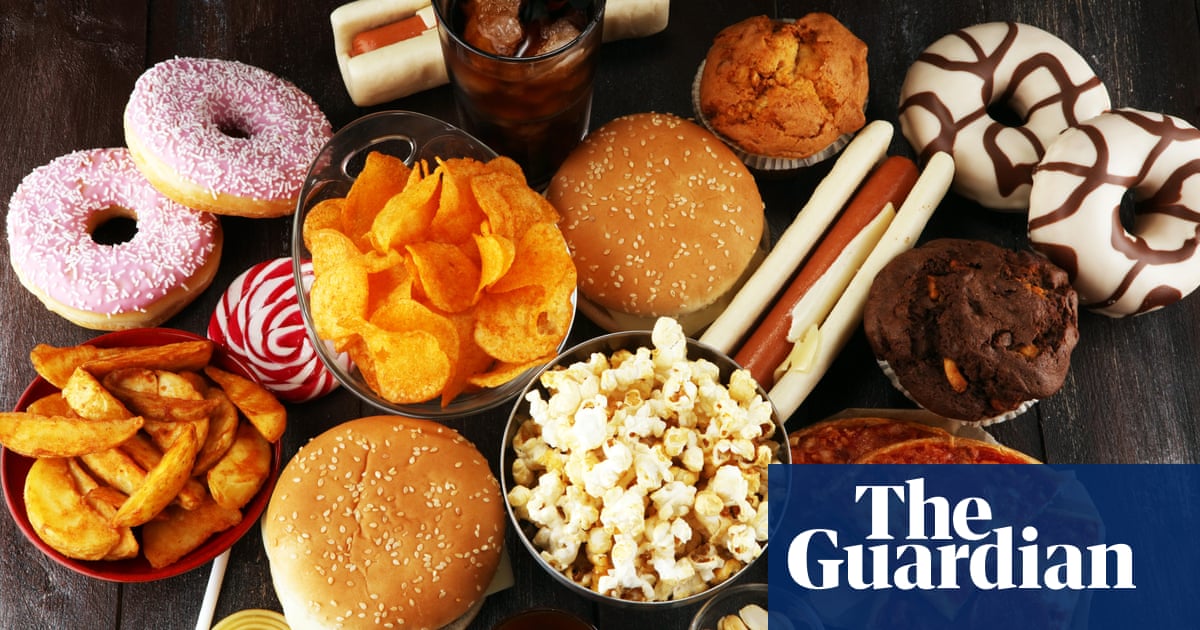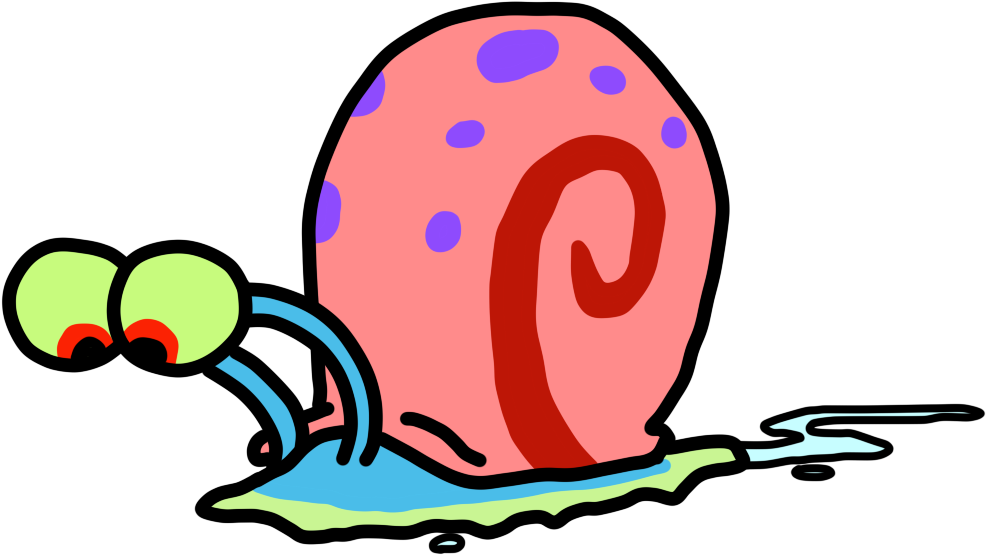Consuming large amounts of ultra-processed food (UPF) increases the risk of an early death, according to a international study that has reignited calls for a crackdown on UPF.
Each 10% extra intake of UPF, such as bread, cakes and ready meals, increases someone’s risk of dying before they reach 75 by 3%, according to research in countries including the US and England.
UPF is so damaging to health that it is implicated in as many as one in seven of all premature deaths that occur in some countries, according to a paper in the American Journal of Preventive Medicine.
They are associated with 124,107 early deaths in the US a year and 17,781 deaths every year in England, the review of dietary and mortality data from eight countries found.
That hot dog bun and the cupcake with a head next to it are concerning
“the sky is blue” according to new report!
The NOVA classifications are difficult to work with, and I think the trend of certain nutrition scientists (and the media that reports on those scientists’ work) have completely over-weighted the value of the “ultra processed” category.
The typical whole grain, multigrain bread sold at the store qualifies as ultra-processed, in large part because whole grain flour is harder to shape into loaves than white flour, and manufacturers add things like gluten to the dough. Gluten, of course, already “naturally” exists in any wheat bread, so it’s not exactly a harmful ingredient. But that additive tips the loaf of bread into ultra processed (or UPF or NOVA category 4), same as Doritos.
But whole grain bread isn’t as bad for you as Doritos or Coca Cola. So why do these studies treat them as the same? And whole grain factory bread is almost certainly better for you than the local bakery’s white bread (merely processed food or NOVA category 3), made from industrially produced white flour, with the germ and bran removed during milling. Or industrially produced potato chips, which are usually considered simply processed foods in category 3 when not flavored with anything other than salt, which certainly aren’t more nutritious or healthier than that whole wheat bread or pasta.
If specific ingredients are a problem, we should study those ingredients. If specific combinations or characteristics are a problem, we should study those combinations. Don’t throw out the baby (healthy ultra processed foods) with the bathwater (unhealthy ultra processed foods).
And I’m not even going to get into how the system is fundamentally unsuited for evaluating fermented, aged, or pickled foods, especially dairy.
If specific ingredients are a problem, we should study those ingredients. If specific combinations or characteristics are a problem, we should study those combinations. Don’t throw out the baby (healthy ultra processed foods) with the bathwater (unhealthy ultra processed foods).
We’ve been doing that for years, and the result on public health has been fad diets and “superfoods”. Focusing on ultra processed foods specifically calls out the obvious problem - we were significantly healthier before these foods were invented, and are less healthy after. The categories for processed-ness are necessarily arbitrary, since we have to decide what constitutes “processed”, and so sometimes relatively healthier food ends up appearing “worse” than less healthy food. But the end result is the headline above, which can be pointed to the hundred billion times it must be pointed to, in order to convince people that they should not eat a diet consisting of Doritos, mountain dew, slim jims, and ice cream.
Focusing on ultra processed foods specifically calls out the obvious problem - we were significantly healthier before these foods were invented, and are less healthy after.
But what confounding variables have also increased during this time? Do we have endocrine disruptors in our drinking water or food packaging or in the foods themselves, from microplastics or whatever? Have we been fertilizing our fields with industrial waste containing toxic “forever chemicals”? Have we become more sedentary at home and at work? I mean, probably yes to all of these.
I do believe that nutrition is more than simple linear addition of the components in a food. But insights can still be derived from analyzing non-linear combinations (like studying the role of fiber or water or even air in foods for the perception of satiety or the speed that subject ingest food), or looking towards specific interactions between certain subsets of the population with specific nutrients. We can still derive information from the ingredients, even if we move past the idea that each ingredient acts on the body completely independently from the other ingredients in that food.
And look, I’m a skeptic of the NOVA system, but actually do appreciate its contribution in increasing awareness of those non-linear combinations. But I see it as, at most, a bridge to better science, not good science in itself.
I believe nutrition is quite simple: Eat real food. That will get you 90% of the way there, if you are an average person who just wants to be healthy.
Some bread is treated with stuff one would ordinarily not want to eat.
So why not focus on the foods containing that stuff, rather than the superficial resemblance of all foods that kinda look like the foods that contain that stuff?
Let’s say you have a problem with potassium bromate, a dough additive linked to cancer that remains legal in U.S. bread but is banned in places like Canada, the UK, the EU.
So let’s have that conversation about bromate! Let’s not lump all industrially produced breads into that category, even in countries where bromate has been banned.
Another cancerous item is sodium benzoate. I use it to make photos. It reacts with UV light in gelatin to cause the gelatin to harden up. That same effect is what give you cancer. Its the free radicals generated during UV exposure.
I feel like this is an area of “science” that’s just a mish mash of various corporate lobbying.
Absolutely correct. This classification system points the finger at things that everyone (read: everyone who had a semblance of nutritional education) knows are bad for you, but then lumps in things like bread and cheese with them! So of course people who don’t know much better hear this, they’ll think “well if bread and cheese are just as bad for you as Cheetos, of course I’m getting the Cheetos, they’re delicious”.
deleted by creator
We know
You say that like its a bad thing.
A certain leader eats a shitload of them each week, so we can only hope xD
So we’re just doing “early death” as a cause of death now?
I feel like we’ve known this for a very long time
We’ve known about climate change for a long time too. “We” not all of us.
True
It’s astonishing to me that scientists are using such unscientific terms like “ultra processed food”. What is it about these foods that is unhealthy?
It’s like saying “sports are dangerous” while including football and golf in your definition.
I think there’s a bit of a political drive to try to label chronic conditions as “lifestyle” diseases tbh, hence the loose definitions.
I just had the same thought as I was formulating a different comment here.
Scientists only use terms like ultra processed food after defining them in their scientific papers. The problem here is that the media find it difficult to write a short article for the general audience if they have to define things scientifically.
What specifically is bad about UPF foods is still being researched. A few leading ideas are:
- Very little fibre
- Starches are all immediately accessible to digestion and so blood glucose spikes much more than for the non-UPF equivalent
- UPF foods are soft and dry (so weigh less) making it very easy to eat a lot very fast, so you eat too many calories.
- Relatively high in salt and sugar
- Use of emulsifiers. These may change your gut microbiota and also make your gut more leaky causing inflammation
- Use of preservatives and artificial colours
- Frequently have a lot of oil
Low fibre, emulsifiers and preservatives, while lacking variety of phytochemicals found in fresh food is known to change your gut health. People on UPF diets tend to eat more and have higher blood glucose spikes leading to heart disease and diabetes.
Altogether this is a recipe for a shorter, less healthy life
Is UPF food with ultra high fibre bad? Is UPF with ultra high vitamin A bad?
Is UPF food with ultra high fibre bad?
I don’t know.
My thoughts are that your total daily intake is more important than considering any single food item. As such, having some UPF in your diet is ok. The problem becomes epidemiologically measurable when, like the UK and US, 60% of calories consumed by some demographics are from UPF food.
And there are almost certainly multiple different things ‘wrong’ with UPF and so if you fix one problem, you may still be at risk from another. For example in your question, there are a lot of studies showing the importance of fibre in the diet, including those that add bran to whatever the person normally eats. So UPF with lots of fibre, all things equal, is likely less bad than UPF without.
Is UPF with ultra high vitamin A bad?
Fat soluble vitamins (A, D, E and K) are interesting in that they don’t show benefits above RDA, and in high doses cause a long list of nasty symptoms. In particular, vitamin A in excess is correlated with increased risk of multiple major diseases and even death.
Those are shit definitions that come from pop-science not real science. They’re so broad as to be functionally useless.
The NOVA classification system is “real” science, but in my opinion the arbitrary and vague definitions make it so that it’s not very good or very robust science.
“Very little fiber”, “Frequently have a lot of oil”, and “Relatively high in salt and sugar” aren’t a classification, they’re vibes.
“Use of Emulsifiers” is worthless. Eggs, garlic, and butter are emulsifiers.
NOVA is not about finding stuff out, it’s about creating a science-y sounding framework to replace the food pyramid.
“Very little fiber”, “Frequently have a lot of oil”, and “Relatively high in salt and sugar” aren’t a classification, they’re vibes.
What you’ve listed aren’t classification criteria. These are generally common characteristics within the category, and a basis for investigating what causes ultra processed foods to generally be bad.
I’m in this thread arguing that the scientists have the data to be able to just analyze correlations and trends of those characteristics directly, rather than taking the dubious step of classifying them into the NOVA category to begin with.
It’s not pseudoscience or not science though. The models are the models, and I think they’re bad models, but I don’t think they’re outright unscientific.
Use of emulsifiers.
Frequently have a lot of oilOh no, not my mayo!
…is aioli ok or do saponins count as emulsifier, here?
There is no single definition of ultra-processed foods, but in general they contain ingredients not used in home cooking.
Many are chemicals, colourings and sweeteners, used to improve the food’s appearance, taste or texture.
Fizzy drinks, sweets and chicken nuggets are all examples. However, they can also include less obvious foods, including some breads, breakfast cereals and yoghurts.
A product containing more than five ingredients is likely to be ultra-processed, according to public health expert Prof Maira Bes-Rastrollo of the University of Navarra in Spain.
Ultra-processed foods are often high in salt, sugar and saturated fats. In the UK, look out for a “traffic light” label on the packaging.
https://www.bbc.co.uk/food/articles/what_is_ultra-processed_food
“An ultra-processed food (UPF) is a grouping of processed food characterized by relatively involved methods of production. There is no simple definition of UPF, but they are generally understood to be an industrial creation derived from natural food or synthesized from other organic compounds.[1][2] The resulting products are designed to be highly profitable, convenient, and hyperpalatable, often through food additives such as preservatives, colourings, and flavourings.[3] UPFs have often undergone processes such as moulding/extruding, hydrogenation, or frying.[4]” Wikipedia
I don’t know why it is not defined as such. It’s easy to understand to me anyway. Flour has been ground up by humans for centuries, and has gone through a process, but the end product still at least resembles what you find in nature. Glycerides however, need to be explained and created using chemistry through indusrial processes.
I don’t know if I could have picked a better example I am no expert. I’m simply disheartened so many struggle to distinguish between processed and ultra processed.
Olive oil is processed; if then, in an industrial process they extract the glyceride from that process and isolate it to its chemical form, to only then inject it into another food stuff product, that’s ultra processed.
Im not that smart, anyone feel free to holler at me for being incorrect. This is my understanding however.
I gave up Ultra-processed foods 15-20 years ago and lost a lot of weight, and maintained that weight loss for years only using the avoidance of ultra-processed foods. Of course when I got slack, I gained again. So to me it seems obvious the harms. However, one could argue injecting vitamin c to a food is healthy, and would be defined as going through ultra process to isolate the vitamin compound.
But there is, to me, something sinister to have food scientists engineer food to be highly palatable and addictive, while also being detrimental to our health. Looking at you hot cheetos.
A product containing more than five ingredients is likely to be ultra-processed
Ugh. No. That amounts to saying “anything that contains five spice is ultra-processed”. Why do you hate Chinese cuisine.
The “not used in home cooking” rule of thumb is way better though you can certainly make absolutely filthy dishes at home. Home cooking also uses “chemicals, colouring and sweeteners”, and also home cooks care about appearance, taste, and texture.
What I’d actually be interested in is comparing EU vs. US standards UPC. EU products use colourings such as red beet extract, beta-carotene, stabilisers, gelling agents etc. like guar gum or arrowroot, when they use fully synthetic stuff then it’s generally something actually found in nature. Companies add ascorbic acid as antioxidant, grandma added a splash of lemon juice, same difference really.
A EU strawberry yoghurt which says “natural aroma” is shoddy, yes, you’re getting fewer strawberries and more strawberry aroma produced by fungi, but I’m rather sceptical when it comes to claims that it’s less healthy.
In this reply you you talked about “some breads”, the OP Post only talks about bread - and that for sure had only ingredients in using at home.
Same for French fries: potato, salt, fat .
I’m with the poor downvoted fellow, I don’t understand where the risk comes from when it’s described this vague.
Are home made burgers better? Is it the freezing process and I should lower my meal prep? Is it additives?
Thank you for the details - as you point out this is a functionally useless definition.
It reeks of “You know what I mean - that bad stuff”. And that’s not a good scientific definition.
A product containing more than five ingredients is likely to be ultra-processed
Curry is “ultra-processed” - you heard it hear first.
Like I said - “Sports are dangerous” is a very bad way to try to categorize risky activity. Golf and football are very different as are Curry and Twizzlers.
Yea the 5 ingredient stuff is weird, what if I make a 5 fruits salad. To me the number of unnatural processing steps (processes that don’t occur regularly in nature) makes more sense.
Yes, curry is processed food. It goes through the unnatural process of high heat cooking. I’m not sure about healthy-ness, I think a lot also depends on dosage. I don’t see processing as always being bad.
To me, Dosage makes the poison.
Drinking 4 gallons of curry in 1 sitting is probably bad, same as drinking 4 gallons of unprocessed water in one sitting.
Bread is UPF???
probably depends on the type of bread. sliced bread commonly sold in the uk is certainly UPF
A bread with only flour, water, salt would be a processed food only as flour is processed.
A bread with 23 items listed in it’s ingredients, half of which sound like something you’d hear in chemistry class, is ultra-processed.
This is the correct answer.
Another way to distinguish the good from the bad: Good bread goes stale in a few days, it also is harder to chew. UPF bread will sit in your breadbin for 7 days without noticeable changes and is fluffy and relatively light.
The reason for the fluffiness and the shelf life is all the chemical additives.
You can see why the corporations love UPF bread - and why (if you didn’t know the health impact) you might want to buy UPF bread on your weekly shop.
Even with this information, it’s fine if it’s a small part of your diet. My kids aren’t going to die because they eat a peanut butter and jelly sandwich every day.
Always having it available and the fact that they’ll eat it mean it’s the healthier choice.
You have to make tradeoffs. That’s just how food works and how it has always worked.
you can keep bread goods soft for a week without ultra processing using the Tangzhong method! It’s delicious and easy I recommend it to all my bread lovers!
I buy my bread at the local bakery, I sure hope it’s not processed cause I like that shit
You could ask them
Sorry, I’m a little bit shy when I have to ask the difficult questions. Should I just ask “how is [the bread I buy] made ?”
I think so?
A bread with only flour, water, salt would be a processed food only as flour is processed.
Would be as hard as stone and not bread at all.
What is considered an ultra-processed food? Like… Cheese is processed (all cheese; it isn’t just found, it’s made by processing milk). Is it ultra processed? What about a hot dog?
How is milk processed? It’s pasteurized, which means it’s heated to kill bacteria. Nothing is added to the milk … so no, it is NOT considered a ‘pprocessed’ food.
It is highly processed.
It is grass that has gone through a cow.
Grass is highly processed.
It’s carbon dioxide, dihydrogen monoxide and photons that have gone through photosynthesis.
I’m just going to eat hydrogen from now on
Trophicmaxxing
Look up how to make cheese.
Firstly, pasteurisation is most definitely a process.
Secondly, it’s very unlikely you are buying milk which has only been pasteurised, it has very likely at least also been homogenised, after being mixed from various different sources in order to produce a mill standardised fat & milk solids. The vast majority of the time rather than just being blended, it has been centrifugally separated into fractions that are then recombined in order to create a standard product.
None of this is really bad, btw, but it is 100% processing.
Don’t forget to add in the vitamin D. Otherwise I won’t absorb enough calcium.
Unfortunately I don’t actually drink milk anymore. Maybe I get a gallon every few months.
I’m not sure about milk, but high temp heating is not something that occurs naturally. I am pretty sure heating kills both good and bad stuff so it chemically alters milks, even if minimally. If it is altered chemically or it’s nutrient profile changes or it goes through a process that doesn’t occur regularly, naturally in nature, I consider it processed.
Some form of processing is necessary to prevent disease, i am not against processed stuff to prevent disease.
Eating raw wheat seed, our body can’t absorb anything, eating powered wheat we still can’t absorb much nutrient. The moment we add water and heat and make bread, we break the cell walls, and now we can absorb most of the nutrients. It also raising the glycemic index of wheat.
I don’t consider fermented (decomposition) stuff like yogurt as processed since it can occur naturally, I just see it as a different food, like a seed is a food that can naturally become a plant that is also a food.
It seems cheese just missed the mark for ultra status according to this specification I found on webMD.
a quick summarisation is that there are 4 groups:
- Unprocessed or minimally processed foods (berries, nuts etc).
- Processed culinary ingredients (oils, butter, sugars etc).
- Processed foods (cheese, bread. Stuff with 2+ ingredients).
- Ultra-processed food and drink products (preservatives, additives, all the bad -ives).
So I’m guessing a hot dog would be ultra processed due to preservatives and additives often found in the ‘meat’.
That was an interesting rabbit hole to go down. Feels as though what is considered ultra-processed by the experts, is what us laymen tend to refer to as processed foods. I suppose technically their terminology is correct (the best kind of correct ofc), but it just feels like an exaggeration due to everyday usage of the term being what it is.
Edit: formatting.
Thank you. 🐇
Gotta up my junk food consumption then
It is my life’s dream to die clutching my heart as I’m giving a presentation in front of hundreds of people.
For example, US research published last year in the BMJ found that people who consume the most UPF have a 4% higher risk of death overall and a 9% greater risk of dying from something other than cancer or heart disease.
If you don’t want to die of cancer and heart disease, UPF may be be a good choice.
The 4% greater risk of dying… Does that mean if I have a 10% chance of dying by age 70 it becomes a 14% chance or a 10.4% chance? I believe the latter. But that’s a correlation for the people who eat the most UPF. Would have to see how that’s controlled for socioeconomic class and access to healthcare.
It’ll be a delicious death. Mmhmm a cupcake death.
As a vegetarian, I sometimes eat a lot of meat substitutes that are highly processed.
I figure it’s a worthwhile trade.
Meat substitutes are not necessarily UPFs.
“Processed” is a shitty descriptor without a clear definition. Cooking a food is processing it, but some food only become degestible (like some meat) when you cook it. Bread and all baked goods are processed. Are they all going to end us?
So you may not even be making a trade here. Not all substitudes are equal.
You’re totally right. I suppose I am thinking of things like chicken’t nuggets or Beyond Beef. Things that would be considered junk food anyways.
The long game suicide, baby.











